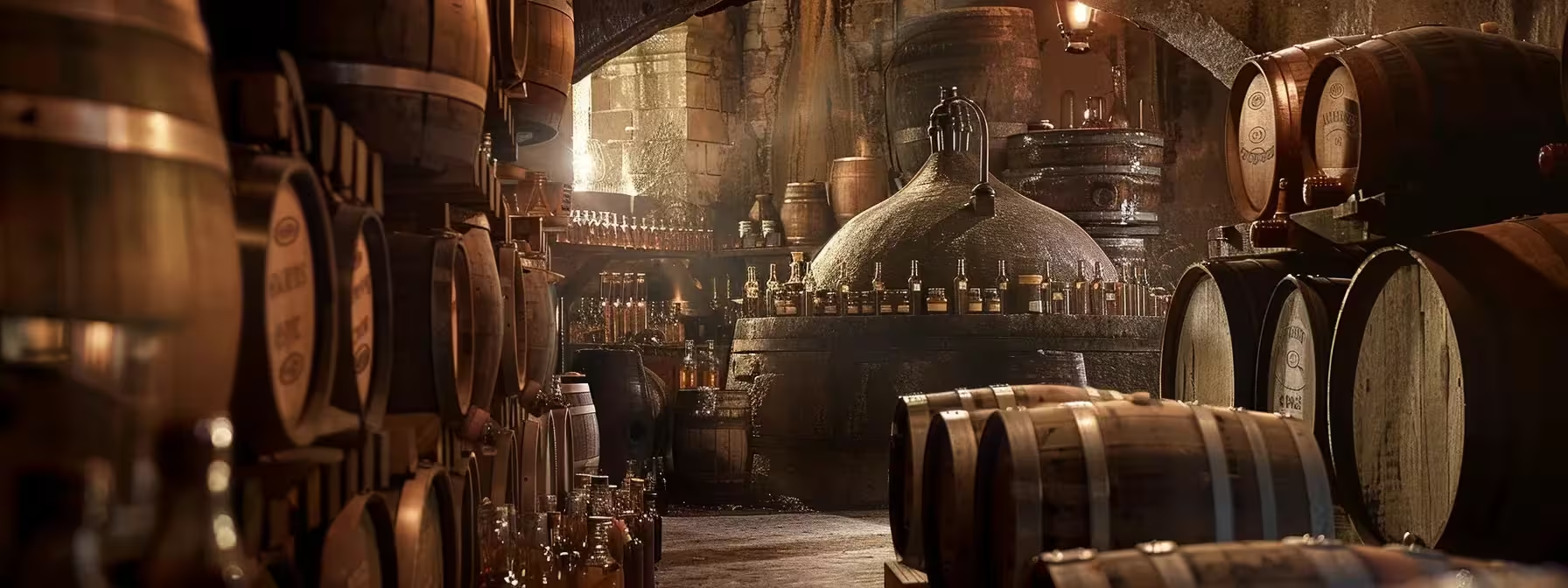
Have you ever wondered how aging can transform a simple cider into a symphony of flavors? This guide will explore the intricacies of the aging process, addressing how elements like water quality, yeast strains, and fermentation techniques interact with the juice to elevate your cider. Readers will learn about selecting ciders with aging potential, preparing them for this journey, and creating the optimal conditions to enhance their taste profiles. For cider aficionados seeking to satiate their curiosity and palate, understanding these principles can unravel the rich complexity locked within aged cider. This article will guide you through the steps for achieving a cider that not only quenches your thirst but delights your taste buds.
Key Takeaways
- Cider flavor complexity increases with the aging process, influenced by the yeast and fermentation byproducts
- Barrel type and apple variety significantly impact cider’s flavor and suitability for aging
- Temperature control and correct oxygen levels are critical for maintaining cider quality during aging
- The addition of wood chips or spirals offers an alternative to barrels for imparting woody flavors
- Serving chilled and in the right environment enhances the appreciation of aged cider’s nuanced flavors
Understanding the Aging Process in Cider Making
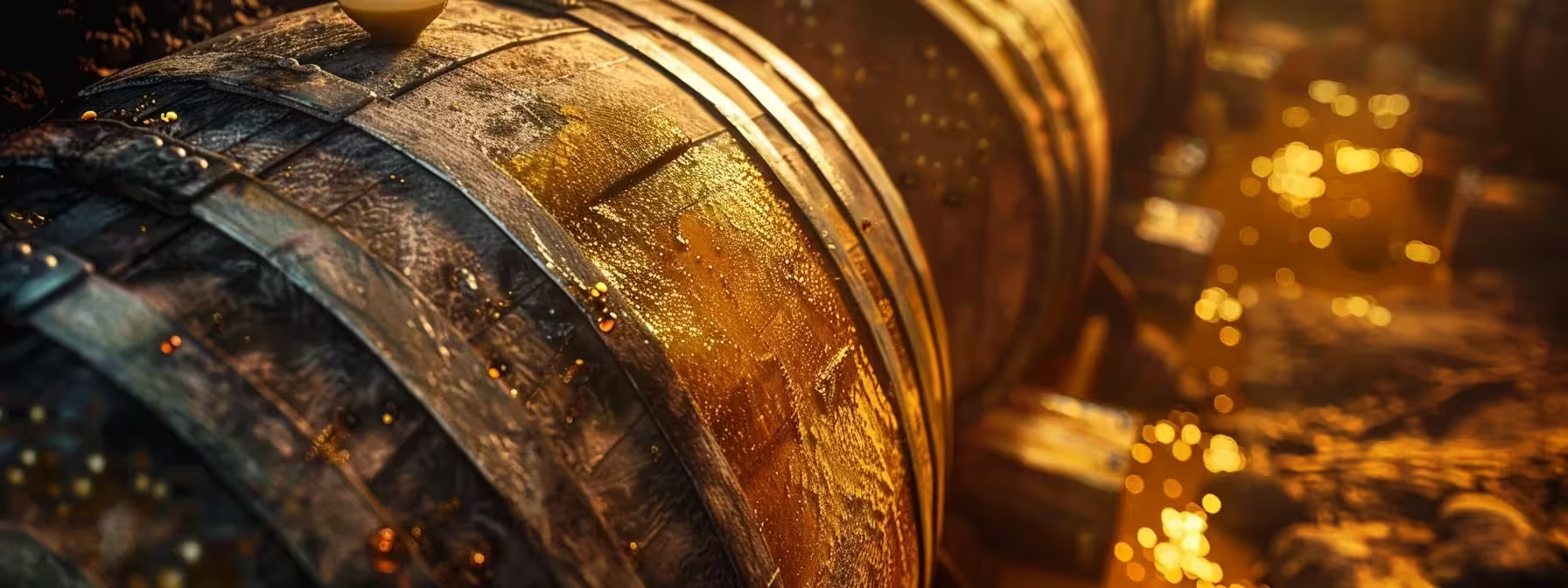
The aging process in cider making is a critical phase where the flavor undergoes a remarkable transformation. Understanding the science behind these changes, various factors that influence cider maturation, and the pivotal role of yeast in developing taste complexity are essential. This section will delve into how the stopper affects cider brewing, the transformation of the liquid over time, and the resulting alcohol by volume. These insights will guide readers through the intricate journey from fresh-pressed apple juice to a mature, nuanced beverage that delights the palate.
The Science Behind Flavor Transformation
At the heart of cider’s flavor transformation is the meticulous interaction between sugar and yeast during the fermentation process. As the yeast consumes the sugar found in apple juice, it produces alcohol and carbon dioxide, not only creating the signature effervescence of sparkling ciders but also beginning a complex flavor evolution. This natural chemistry is further enriched when the cider is aged in barrels, where contact with materials such as oak can infuse the beverage with additional notes reminiscent of fine wines.
Aging cider is akin to nurturing a fruit tree: time and conditions must align to yield the desired outcome. In an oak barrel, for example, cider not only absorbs subtle wood flavors but also benefits from slow oxidation, which rounds out the acidic edges, softening the beverage into a more mellow and palatable drink. The type of barrel, be it previously used for wine or spirits, imparts distinct characteristics: oak can lend a robust structure, while a wine barrel might imbue fruit-forward nuances:
| Barrel Type | Flavor Influence | Suggested Aging Time |
|---|---|---|
| Oak Barrel (Virgin) | Introduces strong oakiness, vanilla, and tannins | 6-12 months |
| Wine Barrel (Used) | Adds subtle fruit notes and complexity | 3-6 months |
| Spirit Barrel (Used) | Imparts bold flavors from previous spirit, e.g., whisky | 6-18 months |
Factors That Influence Cider Maturation
One pivotal element that guides the maturation of cider is the acid content present in the apple varieties selected for brewing. Acid serves as a preservative that can extend the cider’s life, enhancing its stability while contributing to the desired sharpness in the drink’s profile. However, the cider maker must achieve a balance, as high levels of acid can overpower the nuanced flavors that emerge over time. The judicious selection of apple varieties with varying acid profiles thus plays a critical role in laying the foundation for a cider’s eventual complexity and savor.
| Apple Variety | Acid Content | Impact on Flavor Profile |
|---|---|---|
| Granny Smith | High | Sharp, tangy notes |
| Golden Delicious | Low to Medium | Subtler, sweeter profile |
| McIntosh | Medium | Well-rounded, slightly acidic |
Temperature control throughout the aging process significantly impacts the cider’s development, acting much like the subtle application of heat in the brewing of beer. A consistent, cool temperature allows the cider to mature slowly, enabling the development of alcohol and the subtleties of flavor without the interference of unwanted byproducts. Conversely, irregular temperatures can lead to inconsistent maturation stages, potentially spoiling the batch or yielding a less refined drink. For the craftsperson, the meticulous management of aging conditions is essential to ensure the highest quality beverage reaches the consumer.
The Role of Yeast in Developing Complexity
Yeast plays an indispensable role in cider making, driving the fermentation process that transforms simple sugars into ethanol, the principal type of alcohol in any alcoholic beverage. During this biological activity, various byproducts contribute to the cider’s complexity, including flavor compounds like esters and phenolics. In the art of homebrewing, a cider maker’s choice of yeast strain can therefore dictate much of the beverage’s final character, with wild yeasts bringing unpredictable diversity and cultured yeasts ensuring a more controlled fermentation outcome.
Further complexity in cider is cultivated through a process known as malolactic fermentation, where specific bacteria convert sharper malic acid into softer lactic acid, introducing a smooth, buttery aspect to the palate. This biological process not only rounds out the tannin profile but enhances the stability and longevity of the cider. For homebrewers and commercial producers alike, understanding and managing the delicate interplay between yeast and these bacteria is critical to crafting a well-balanced and mature alcoholic beverage.
Selecting Ciders Ideal for Aging
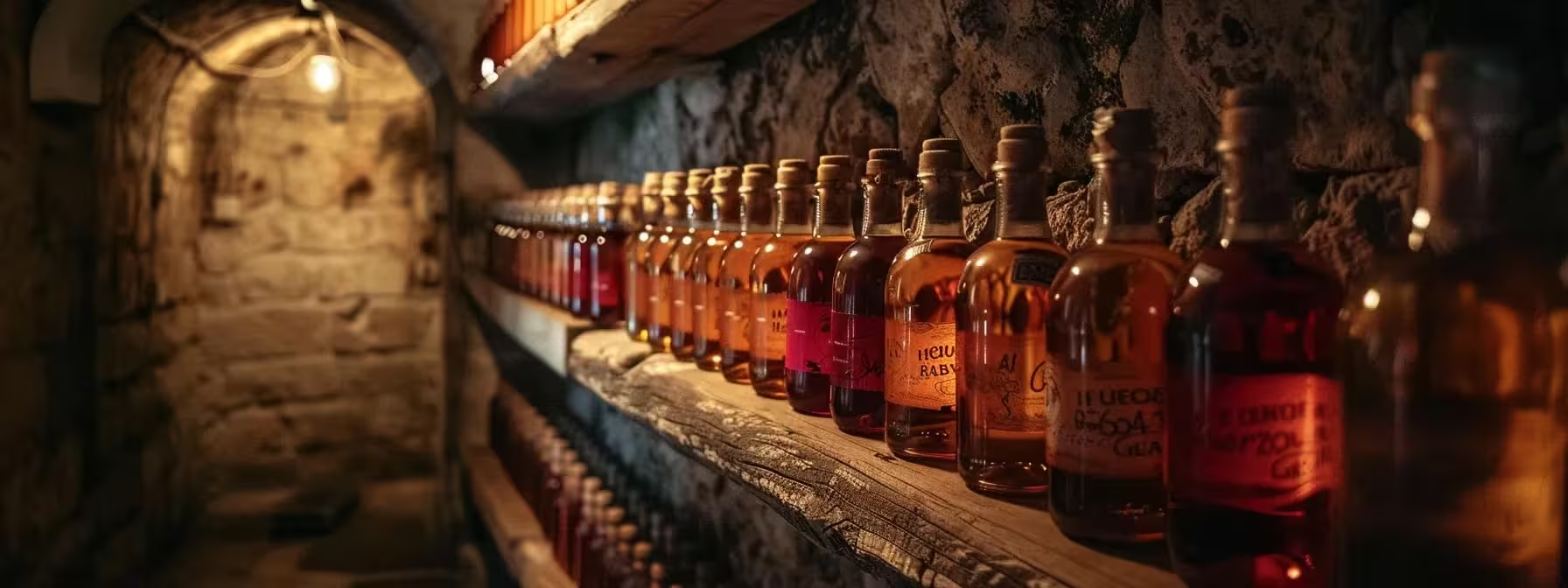
In discerning which ciders are most suitable for aging, one must consider both the type of apple and the inherent qualities of the brew itself. Identifying apple varieties that lend themselves to long-term storage is a pivotal step, as is recognizing the characteristics that enable ciders to mature gracefully. The ability to differentiate between ciders poised for immediate consumption and those that will benefit from years in the cellar hinges on understanding the roles of components like carbon dioxide, nutrients, carbon, sulfites, and the nature of the storing vessel, such as glass. Each subsequent section provides an elucidation of these elements, offering valuable insights into the fine art of cider aging.
Identifying Apple Varieties Suitable for Long-Term Storage
Selecting the right apple varieties for long-term cider storage begins with understanding the balance between sweetness and acidity. The presence of malic acid, a key component contributing to a cider’s tartness, can be indicative of a variety’s suitability for aging, as it provides resilience against spoilage. Winemakers look for apples with a high malic acid content and appropriate pH levels, which can withstand the aging process, allowing the airlock to safeguard the cider as its profile develops over time:
| Apple Variety | Malic Acid Content | pH Level | Suitability for Aging |
|---|---|---|---|
| Bramley’s Seedling | High | Low to Moderate | Excellent |
| Winesap | Medium to High | Moderate | Very Good |
| Ashmead’s Kernel | High | Low | Excellent |
The sweetness in apples, which translates into the residual sugar content of cider, also plays a crucial role in determining aging potential. To create a cider that matures elegantly, one must select apple varieties with a naturally balanced sweetness that can evolve over time without losing its defining character. The best candidates for aging are those with a robust flavor profile that, once past the airlock and during the aging stage, develop a richer, more complex taste suitable for a discerning palate.
Characteristics of Ciders That Improve Over Time
Ciders with the potential to develop deeper, richer flavors over time often share a common characteristic: the harmonious interplay between sweetness, acidity, and tannin levels. With adequate pasteurization to inhibit unwanted bacteria growth, these elements form a stable foundation primed for maturation. The aging process in a carboy or oak barrel allows for incremental changes that bring forward a bouquet of spice, fruitiness, and oak-inspired undertones, transforming the cider into a beverage that resonates with complexity and robustness.
Another trait of ciders that bode well for aging is the presence of a non-fermented perry base, which contributes natural sugars and soft textures to the mix. Over time, these sugars undergo a slow fermentation process, influenced by carefully chosen strains of bacteria that work with the yeast to enhance the drink’s body and mouthfeel. As these ciders gracefully age, they unfurl layers of flavor and aroma that are not present at the outset, evoking a sensory experience that far surpasses that of their younger counterparts.
Differentiating Between Young and Age-Worthy Ciders
Distinguishing between young ciders, often enjoyed for their immediate freshness, and those with the potential to deepen in complexity through aging is key for enthusiasts looking to curate an orchard-derived collection. Age-worthy ciders typically possess higher levels of pectin, yeast assimilable nitrogen, and sulfur dioxide at bottling, which help safeguard against the detrimental effects of oxygen over time. By selecting ciders with these characteristics, consumers can anticipate a more intricate tasting experience as the beverage matures.
An understanding of how oxygen interaction alters a cider’s profile is crucial when identifying age-worthy varieties. Ciders crafted with the aim of aging are often produced with lower initial oxygen levels and may include measured amounts of sulfur dioxide to prevent oxidation. These practices, combined with meticulous orchard selection and fermentation controls, create ciders that evolve, enhancing their aroma and taste nuances over months or even years in the cellar.
Preparing Cider for the Aging Journey
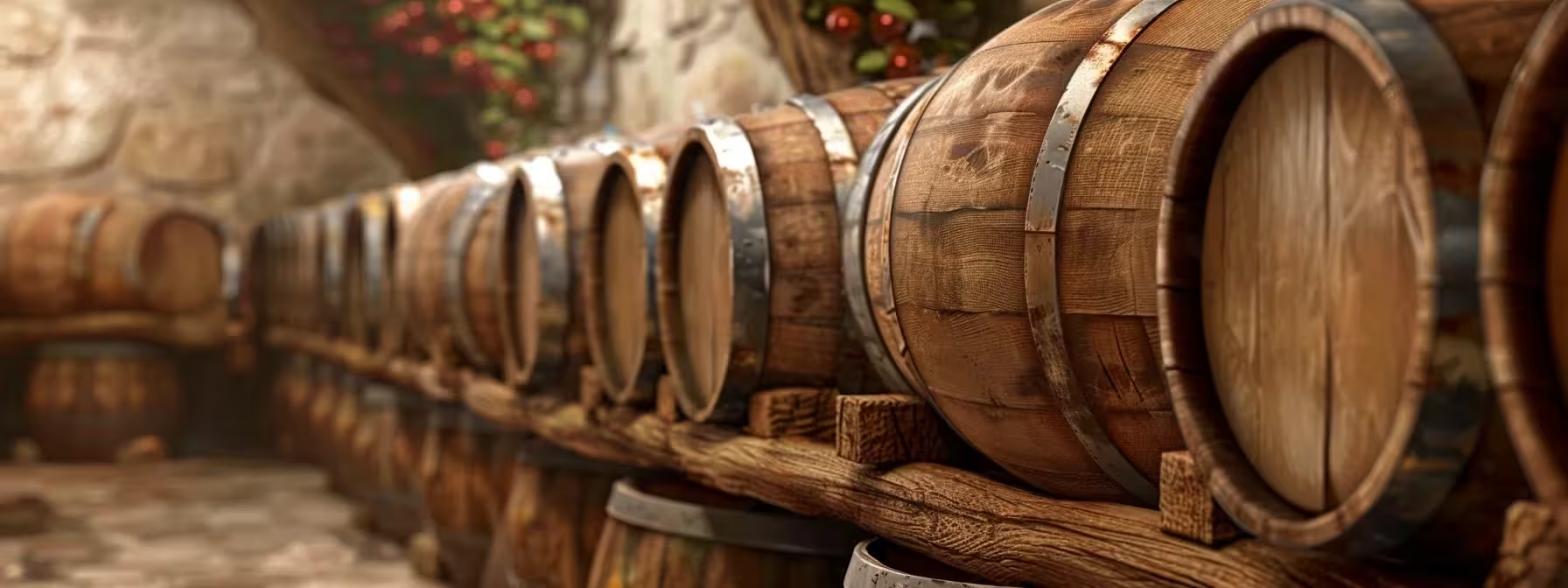
Preparing cider for its aging journey necessitates meticulous steps to ensure the enhancement of its flavor. Adequate sanitation is essential to prevent off-flavors caused by contaminants while selecting appropriate containers safeguards the cider’s delicate evolution during aging. This section will discuss the importance of pre-aging preparations, the role of sanitation, the choice of containers—including considerations of sulfur addition, mead-like qualities, specific gravity adjustments, introduction of lactic acid, and the management of lees—all critical for nurturing the cider to maturity.
Essential Pre-Aging Steps and Considerations
Before embarking on the aging journey, it is crucial to stabilize the apple juice, ensuring that subsequent fermentation enhances the cider’s complexity. One approach involves the judicious use of campden tablets, sulfur-based compounds that inhibit unwanted microorganisms. The precise addition to the gallon of juice not only purifies but also prepares the base for the sophisticated flavors and aromas to develop as the cider matures in the bottle.
Success in cider aging relies heavily on meticulous pre-bottling preparations. After fermentation, cider makers carefully siphon the liquid to separate it from the lees, the sediment formed during fermentation. This step prevents off-flavors and ensures a clear, appealing appearance. To understand the role of these initial actions, consider the following table detailing pre-aging considerations:
| Step | Action | Outcome |
|---|---|---|
| Stabilization | Use of campden tablets | Prevents microbial spoilage and prepares juice for aging |
| Separation | Racking off lees | Clarifies cider and reduces risk of off-flavors |
Importance of Sanitation in Preventing Off-Flavors
For an aficionado of apple cider, ensuring a pristine starting point is essential for the aging process to yield a liquor of exquisite flavor. The role of sanitation cannot be overstated, as it serves as the first line of defense against contaminants that can introduce off-flavors. An effective method involves washing equipment with a sodium-based solution, followed by a thorough rinse to avoid any sodium residuals that might alter the cider’s taste.
After scrubbing down barrels and tools, one should store them in a clean, cool space, such as a refrigerator, to maintain their sterility until use. This crucial step prevents the intrusion of unwanted bacteria and wild yeasts, which can spoil the delicate balance of the cider’s composition, leading to compromised flavors and potentially turning a fine batch of apple cider into vinegar – an outcome no artisan seeks to manifest:
| Sanitation Step | Method | Purpose |
|---|---|---|
| Equipment Cleansing | Sodium-based solution wash and rinse | Eliminate contaminants and residual flavors |
| Storage Precautions | Refrigerator storage | Preserve sterility and prevent bacterial growth |
Choosing the Right Containers for Aging
The choice of container is crucial in the aging process, as it directly interacts with the cider, influencing its ultimate character. Stainless steel tanks offer a modern, inert environment, while traditional oak barrels allow for micro-oxygenation and the infusion of tannins. With the incorporation of lactic acid bacteria, such containers can support malolactic fermentation, converting the sharper malic acid in the cider to a softer lactic acid and thus enhancing the mouthfeel and complexity of the final product.
French oak barrels are prized for their subtle flavor contribution, having a celebrated history in the winemaking regions of France. They are known to impart a unique profile that concentrates the flavors and aromas, while autolysis of yeast cells in the cider can develop a richness and depth not achievable through rapid fermentation methods. Selecting the proper vessel for aging is as much an ingredient in the cider’s development as the apples themselves.
| Container Type | Characteristics | Influence on Cider |
|---|---|---|
| Stainless Steel Tank | Inert, Modern | Maintains purity, prevents oxidation |
| Oak Barrel (French) | Micro-oxygenation, Tannin infusion | Enhances flavor complexity, promotes malolactic fermentation |
| Glass Carboy | Visual clarity, Preservation | Allows monitoring of aging process, maintains flavor concentration |
Optimal Conditions for Aging Cider
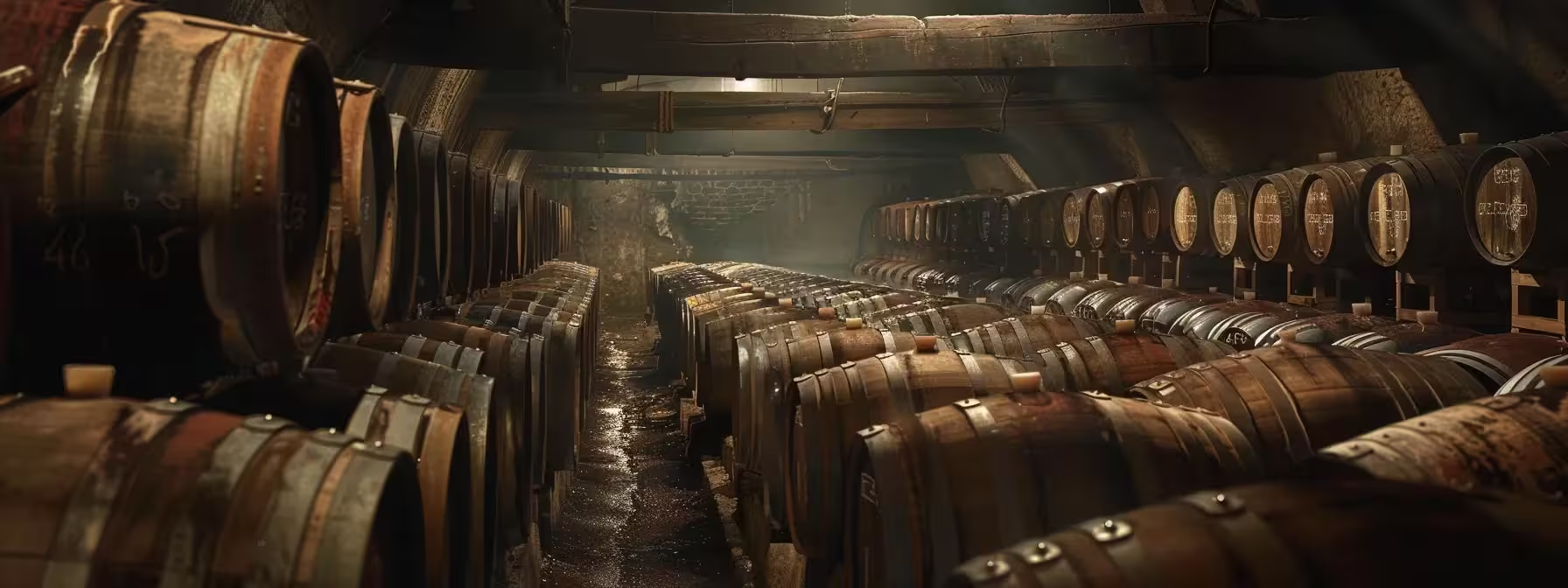
To produce cider that tantalizes the taste buds, paying close attention to the aging process is imperative. This examination of the optimal conditions for aging cider sheds light on the nuanced interplay of temperature and humidity control, and the intricate dance of managing light exposure and oxygen levels. Readers will also gain clarity on the varied timeframes appropriate for maturing different types of cider apple-based beverages. From preventing stuck fermentation to curtailing the introduction of unwanted odors, these insights provide the blueprint for employing methods like using a siphon and selecting the right sugar substitute to perfect the cider-making craft.
Controlling Temperature and Humidity Levels
Controlling temperature and humidity levels is essential in preventing the formation of haze and off-flavors in aging cider, which can impair its resemblance to the clarity and crispness of white wine. Consistent temperatures, typically between 50°F and 60°F, are key to slowing down the aging process, allowing flavors to meld and mature at a gradual pace. Humidity, on the other hand, must be regulated to minimize evaporation and maintain the structural integrity of the barrels, especially when using materials like steel that are less porous than oak.
In terms of managing light exposure and oxygen levels, a cell-like environment shields the aging cider from unwanted photo-oxidation that can degrade its quality, akin to the care taken in champagne production. Achieving the perfect balance of light and oxygen ensures that the cider develops its full potential flavor profile while maintaining its intended effervescence and aroma. The importance of a controlled aging environment is illustrated in the following table:
| Condition | Desired Level | Impact on Cider Aging |
|---|---|---|
| Temperature | 50°F – 60°F | Allows slow, even maturation of flavors |
| Humidity | Regulated | Prevents barrel leakage and evaporation |
| Light Exposure | Minimal | Protects against photo-oxidation |
| Oxygen Levels | Controlled | Ensures development of expected taste and effervescence |
Managing Exposure to Light and Oxygen
Excessive exposure to light accelerates the breakdown of essential compounds in cider, with pectinase enzymes contributing to unwanted changes in the beverage’s clarity and flavor. To circumvent this, aging ciders in a dimly lit or light-controlled environment is crucial. This mirrors techniques used in wine preservation, where bottles are stored in darkened cellars or encased in light-resistant materials such as dark glass or stainless steel, which serve to protect the cider’s integrity.
Consistent racking intervals are equally vital when managing oxygen exposure during the aging process. Oxygen can introduce a harshness to the cider, drastically changing its profile. The cider maker must carefully transfer the cider, using sterile equipment, from one container to another—preferably stainless steel or high-quality plastic— to minimize contact with air. This practice, known as racking, reduces the cider’s exposure to oxygen, which helps maintain its intended taste and aids in the development of a smooth, mature flavor enhanced by careful aging.
Understanding Timeframes for Aging Different Ciders
The duration of the aging process for cider can significantly influence its flavor development, with certain tastes such as vanilla or honey notes becoming more pronounced over time. A well-aged cider typically describes a beverage that has matured enough to strike a perfect balance between the fruit’s natural flavors and the nuanced complexities contributed by the wood of the containers in which it’s aged. For example, a cider aged in oak barrels for a minimum of six months imparts subtle hints of vanilla and rich, woody undertones that can evoke comparisons to Calvados, a sophisticated apple brandy from Normandy.
When considering ciders infused with additional ingredients like honey, pear, or other fruits, the timeframe for aging varies to achieve the desired flavor profile. These ciders may require shorter aging periods to preserve the freshness of the fruit while still benefiting from the interaction with wood that lends complexity and depth. Smaller batches with these delicate flavor infusions often reach their peak within three to six months:
| Cider Type | Additional Ingredients | Aging Timeframe | Flavor Outcome |
|---|---|---|---|
| Oak Aged | – | 6+ months | Vanilla, wood complexity |
| Fruit Infused | Honey, Pear | 3-6 months | Balance of fruit freshness and aged depth |
Ultimately, the cider maker’s objectives determine the appropriate aging period, considering factors such as the presence of residual sugars and the robustness of the initial flavors. The key is to allow enough time for the cider to absorb the desired qualities from the wood while safeguarding the inherent apple or added fruit characteristics. Patience in the aging process is rewarded with a cider that offers a complex medley of flavors, appealing to both the novice and the experienced palate alike.
Techniques to Enhance Flavor Through Aging
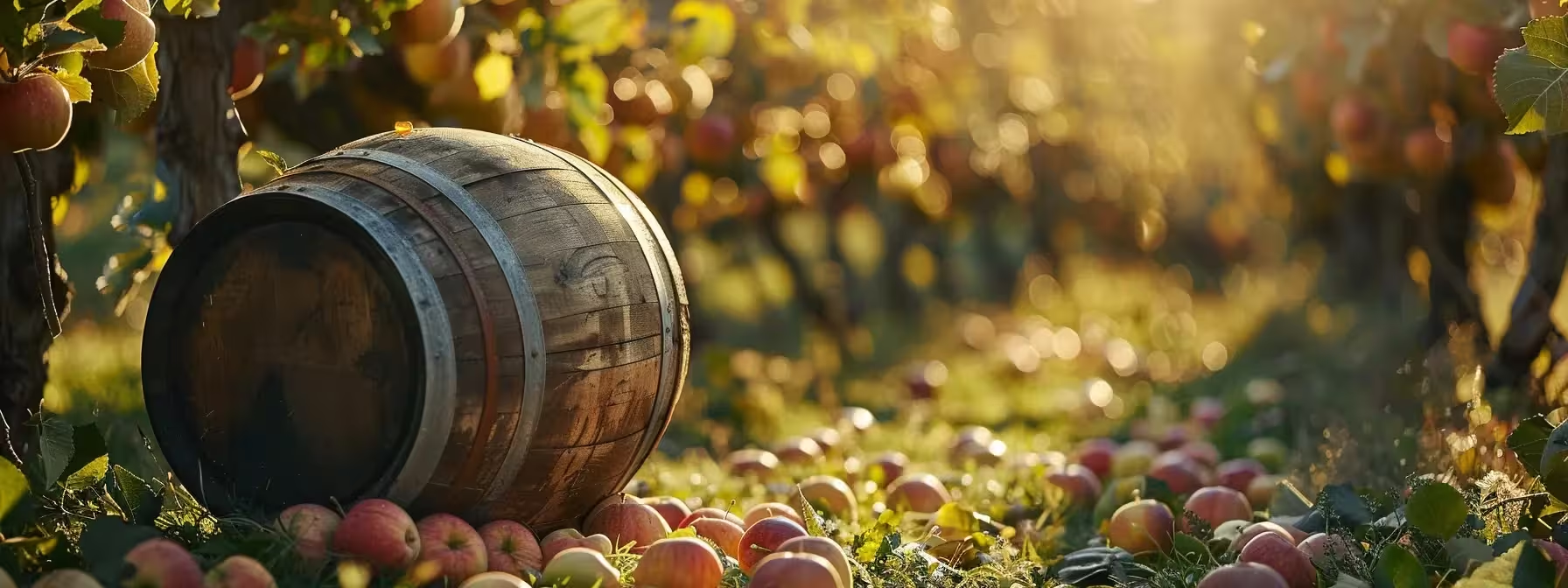
Refining the flavor of cider through aging is an art that offers extensive possibilities to enhance its taste profile. The ensuing techniques will explore the impact of barrel aging, which promises to imbue the beverage with full-bodied character. The integration of wood chips or spirals, an accessible alternative to barrels, can imbue ciders with woody nuances often reserved for grape-derived wines. Secondary fermentation, much like the processes used in the development of hops-laden beers, poses an experimental approach that can introduce unexpected yet appealing dimensions to cider’s flavor. Utilizing tools such as a hydrometer to monitor sugar levels and potassium sorbate to halt fermentation at the precise moment ensures that these techniques are executed with precision, resulting in a cider that truly stands out.
Exploring Barrel Aging and Its Impact
Barrel aging is a revered technique that lifts cider to the same complexity levels associated with red wine, offering an elevated tasting experience. The process involves storing cider in oak barrels where it slowly imbibes the wood’s essence, enhancing the drink with rich, deep flavors and a velvety mouthfeel. Compared to steel or glass containers, the micro-oxygenation through the barrel’s porous structure allows subtle flavor compounds to develop and mature, akin to the character-building effects on fruit wines.
In the context of aging cider, selecting the right barrel is akin to finding the perfect jug to capture the unique bouquet of flavors. Cider enthusiasts often seek the same depth in their beverage as found in a robust red wine; therefore, a barrel’s previous use can be instrumental in achieving this goal. For instance, barrels that have matured red wines impart a nuanced tannic structure, while those that have cradled spirits can introduce a bold, spirited edge. Here are some examples of barrel influences on cider quality:
| Barrel Previous Use | Flavor Influence on Cider | Associated Element |
|---|---|---|
| Red Wine | Tannic depth, red fruit accents | Mature tannin integration |
| Whisky | Smokey undertones, complexity | Bold, spirit-infused edge |
| New Oak | Vanilla notes, structured tannins | Natural wood sugars |
Furthermore, ensuring a perfect seal with a quality cork protects the aging cider from unwanted nitrogen exchange and oxidation, preserving its freshly fermented vitality. The convergence of these aging elements in a well-monitored environment results in a cider that stands shoulder to shoulder with the finest fruit wines, offering a unique alternative to the grape-based traditions of wine connoisseurs.
Incorporating Wood Chips or Spirals
For cider enthusiasts looking to enhance their brew’s flavor profile without full-scale barrel aging, the incorporation of wood chips or spirals serves as an innovative solution. These additions allow for the introduction of the desirable attributes of oak into the liquid, notably when distillation or storage space presents a challenge. The interaction between the cider and these wooden elements can catalyze enzyme reactions, further breaking down glucose and enriching the cider with complex notes similar to those found in aged spirits or premium offerings like Angry Orchard.
The use of wood chips or spirals particularly suits the homebrewer seeking to experiment with syrupy sweetness or a smoky undertone in their concoctions. By controlling the exposure time and wood type, one can fine-tune the aging process to achieve the desired flavor enhancement, bringing a hint of the orchard into every glass. Properly applying these wood elements can lead to a transformation in the cider that could take years to achieve in oak barrels:
| Wood Type | Flavor Profile | Recommended Exposure Time |
|---|---|---|
| American Oak Chips | Introduces vanilla and sweetness | 2-4 months |
| French Oak Spirals | Brings in subtle spice and fruitiness | 1-3 months |
| Charred Oak Chips | Imparts a smoky, robust character | 3-6 months |
Experimenting With Secondary Fermentation
Secondary fermentation is a sophisticated technique used to refine cider’s flavor and mouthfeel. This process allows for the conversion of undesirable compounds like diacetyl, which can impart a buttery taste, into more pleasant flavor profiles reminiscent of a fine chardonnay. Done correctly, secondary fermentation not only enhances the complexity of the cider but also acts as a natural preservative, extending its shelf life.
The presence of sediment is significantly reduced during secondary fermentation, resulting in a clearer and more aesthetically pleasing cider. This stage is critical in achieving a refined mouthfeel, drawing parallels with the winemaking process for high-quality white wines. The judicious application of this technique can transform an ordinary cider into an exceptional beverage, with nuanced layers that rival those found in well-aged spirits:
| Secondary Fermentation Benefit | Impact on Cider |
|---|---|
| Diacetyl Reduction | Improves flavor; remits buttery notes |
| Clarity Enhancement | Decreases sediment; refines appearance |
| Natural Preservation | Extends shelf life by stabilizing cider |
| Mouthfeel Improvement | Delivers a smoother, more sophisticated texture |
Evaluating the Results of Aged Cider

The ultimate test of aged cider’s value lies in its taste – the delicate dance of flavors often highlighted by notes of cinnamon and the rich color born of time. Experts in the United Kingdom, where cider parallels craft beer in sophistication, have honed the art of tasting and noting flavor developments in aged batches. This subsection will navigate the common challenges encountered in evaluating aged cider and offer strategies to surmount them. Additionally, practical tips for serving and enjoying this mature beverage will ensure that each sip reflects the full potential of its underlying pomace. By assessing the results of an aging process done correctly, connoisseurs and newcomers alike can revel in a cider experience that is both enriched and enlivened.
Tasting and Noting Flavor Developments
Tasting aged cider reveals the nuanced interplay of flavors and aromas meticulously developed through the traditional method of slow maturation, an experience not unlike the complexity found in kombucha or vintage wines. As the cider mill’s craftsmanship comes to fruition, enthusiasts employ their palates to discern varietal characteristics, detecting subtle undertones and the depth of taste that only time can bestow.
Professionals and aficionados alike understand that the true essence of cider is captured in its ability to evolve, providing a sensory journal from apple to bottle. Delicate changes in the cider’s profile can indicate successful aging, as the palate is greeted with a harmony of matured fruit notes and refined tannins realized through its prolonged repose.
Common Challenges and How to Overcome Them
Contamination is a common challenge in the aging process of cider, potentially compromising the anticipated enhancement in taste. To combat this issue, mills in the United States adhere to rigorous sanitation standards, akin to those practiced in the brewing of wort. Through meticulous cleaning and sterilization routines, cider makers can prevent the introduction of harmful bacteria and wild yeast, ensuring the cider’s flavor profile develops as intended, with notes of caramel and other desired complexities emerging over time.
Another hurdle faced by cider producers is achieving a balanced maturation that avoids overwhelming caramelization or oxidation. Utilizing specialized equipment, such as precision temperature control systems, United States mills are able to monitor the aging environment closely. This control provides the cider with an even and gradual exposure to the elements, which is essential for developing a refined flavor profile while preserving the beverage’s natural apple essence.
Tips for Serving and Enjoying Aged Cider
When serving aged cider, enthusiasts recommend treating it with the same reverence as a fine sparkling wine. For best results, one should chill the cider to around 45-50 degrees Fahrenheit, ensuring it’s cold but not so frigid that the intricacy of its flavors, akin to those of a ripe granny smith or a luscious peach, is subdued. Pouring gently alongside a spoon, much like decanting a vintage wine, can prevent excessive aeration that might disrupt the cider’s delicate effervescence.
Enjoying aged cider is an art in itself; selecting the right environment enhances the experience. A quiet basement, free from harsh lights and noise, can mimic the serene conditions of a cider cellar and allows the connoisseur to fully appreciate the complex flavor profiles that have emerged. By engaging the senses in a controlled setting, one can discern the subtle notes and whispers of flavor that have developed through patient aging, creating a sensory journey with each sip.
Frequently Asked Questions
What exactly happens during the cider aging process?
During the cider aging process, natural fermentation occurs as yeast converts sugars into alcohol, while flavors mature and mellow, resulting in a more rounded, complex taste.
How do I choose a cider that’s suitable for aging?
Selecting a cider for aging requires opting for one with a higher alcohol content, complexity, and preferably made with traditional methods to ensure it develops richer flavors over time.
What steps are necessary to prepare cider for aging?
Before aging cider, one must complete fermentation, stabilize the drink to prevent spoilage, ensure clarity by racking, and store the cider in an appropriate container at a consistent temperature to mature.
What are the best conditions for aging cider effectively?
For optimal cider aging, maintain a consistent, cool temperature around 50-60°F, with controlled humidity levels and minimal light exposure to preserve flavor and prevent spoilage.
How can I tell if aging has improved my cider’s flavor?
To assess if aging has enhanced your cider’s flavor, conduct a taste test for increased complexity, smoothness, and depth, and note any emerging subtle notes or diminished harshness compared to younger batches.
Conclusion
Aging cider is a meticulous process that can significantly amplify the beverage’s complexity, depth, and mouthfeel, similar to the maturation of fine wines and spirits. The interplay of factors such as apple variety, aging conditions, and container types influences the cider’s evolution from a simple drink to one with nuanced aromas and flavors. By employing techniques like barrel aging and secondary fermentation, cider makers craft a beverage that matures into a rich tapestry of taste. Consequently, understanding and executing the aging process skillfully allows connoisseurs to savor a superior cider whose matured flavors are worth the wait.
